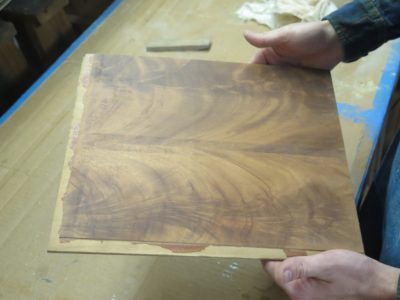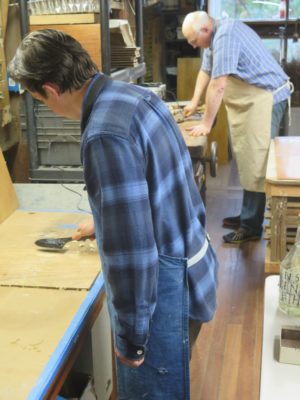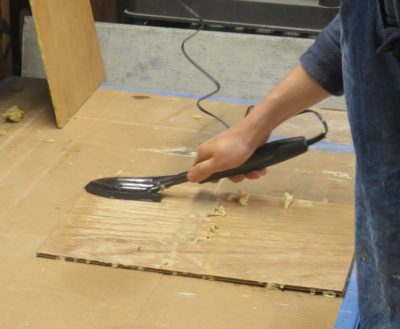Historic Finishing Workshop – Calling Mr. Myagi
It was, in the unforgettable words of actor Pat Morita in The Karate Kid, “Wax on, wax off.” This time, however, the “wax on” was molten and the “wax off” was accomplished with Roubo-esque scrapers I made from brass bar stock and scraps of tropical hardwood flooring. By melting wax into the surface, the wood would be prepared perfectly for a grain-filled spirit-varnish finish in the traditional fashion, wax being the dominant grain filler until mineral deposits like plaster or gesso became more popular with industrial manufacturing of furniture. Although, when hammer veneering was the fabrication technique, the grain was well-filled with hot hide glue.


Three sample boards were readied for the exercise with pumice block and razor blade scraping, especially the crotch mahogany veneer panels that had a lot of residue from their original manufacture (I picked up a stack of these panels somewhere along the way and cannot say exactly how they were made except to say that the trace evidence suggests the use of phenolic adhesive and a mighty powerful press, but there was a lot of smoothing to be done). The mahogany panels were being prepped for primo pad polishing as was one of the nondescript sample boards, the third board was going to be waxed, buffed and nothing else.



With small tacking irons wax from the solid blocks was drizzled onto the wood surface, then the drips were re-melted and spread around the surface until there was a good deposition of the molten wax over the entire sample board.


Once cooled, any excess wax was scraped off with a burr-less scraper fashioned after those described and illustrated by Roubo. When finished, it was time to move on to the process everyone had been waiting for.


How would you do this procedure on irregular surfaces such as a Chippendale chair?
Is there a wax scraping use for the cambered scraper shape in Roubo’s Fig. 5? If so, do you have any recommended radii for the cambering?
I think the radius of the edge treatment would fall somewhere between the sharp edge of a scraper prepared for removing dust nibs from finish and a much more rounded and smooth working edge of a veneer hammer.
Hi William
The cambered edge would be fitted to the swails of bombe surfaces or similar. The edge should be as crisp as possible, so it scrapes off the excess wax without cutting into the substrate.